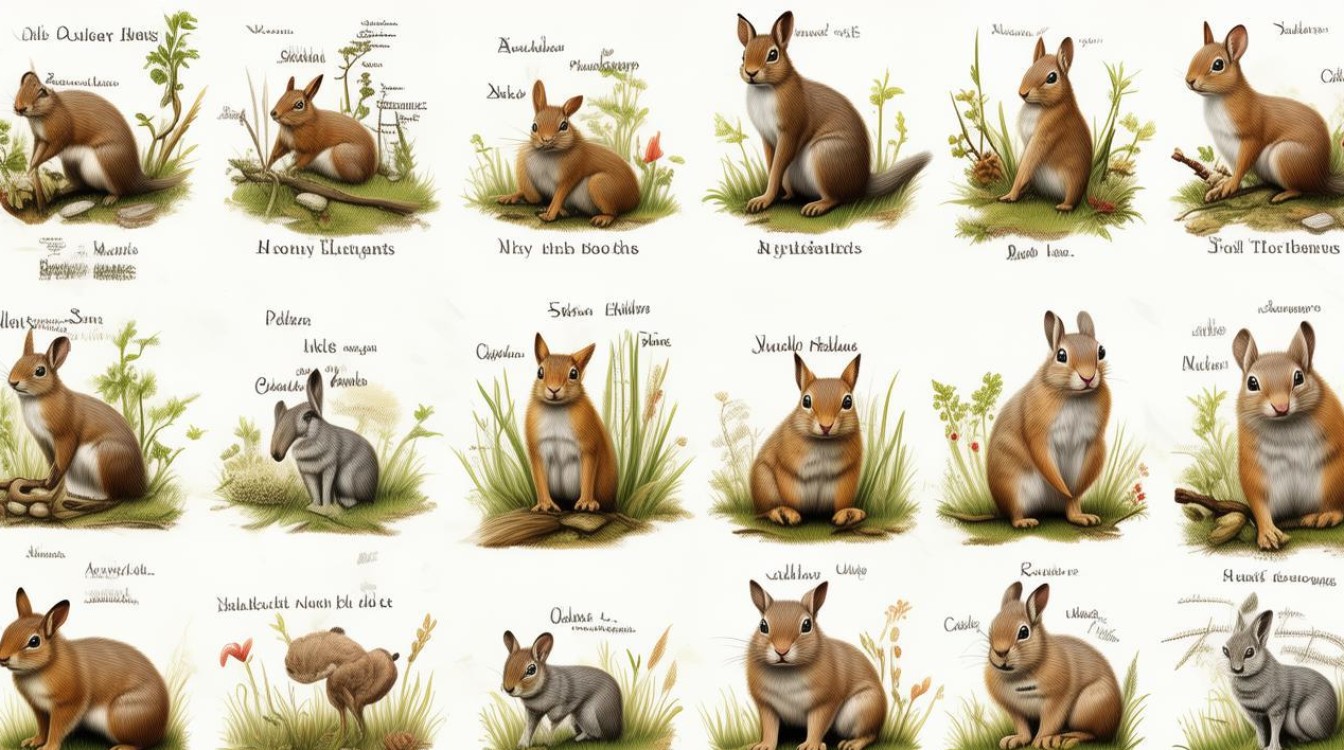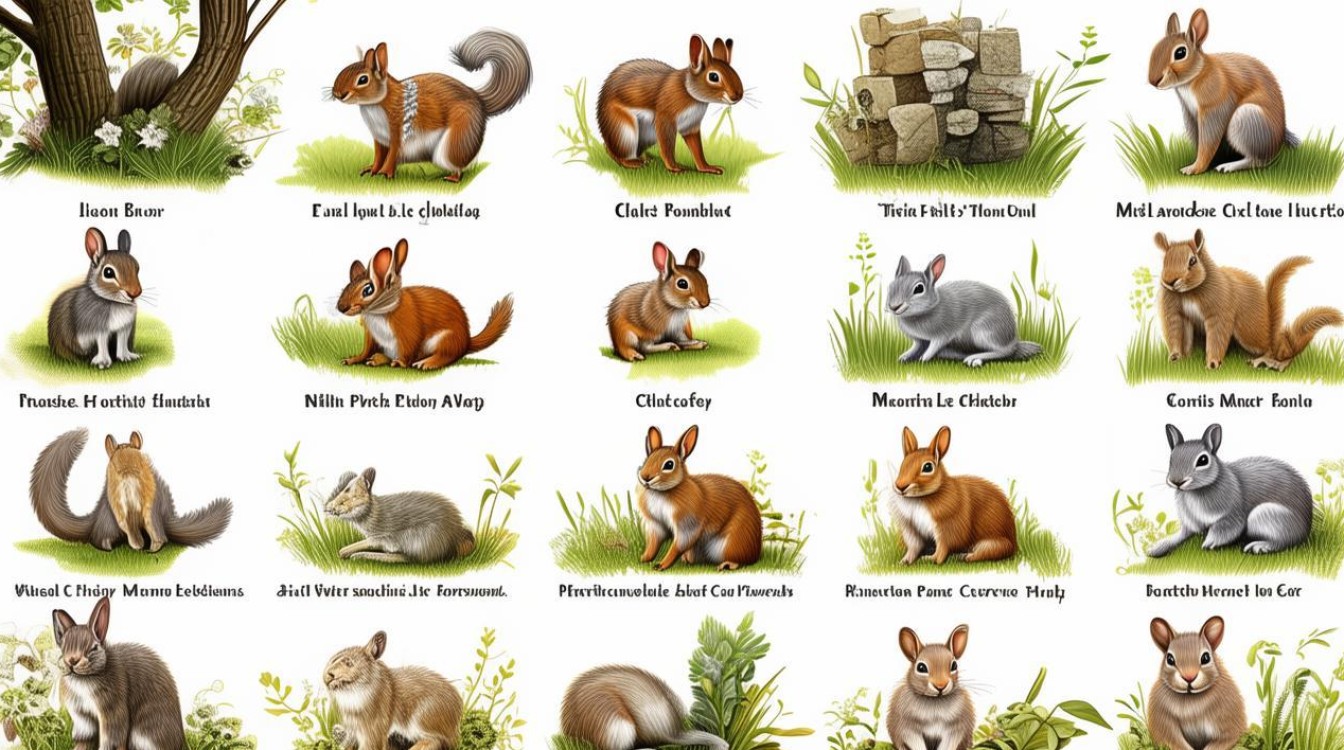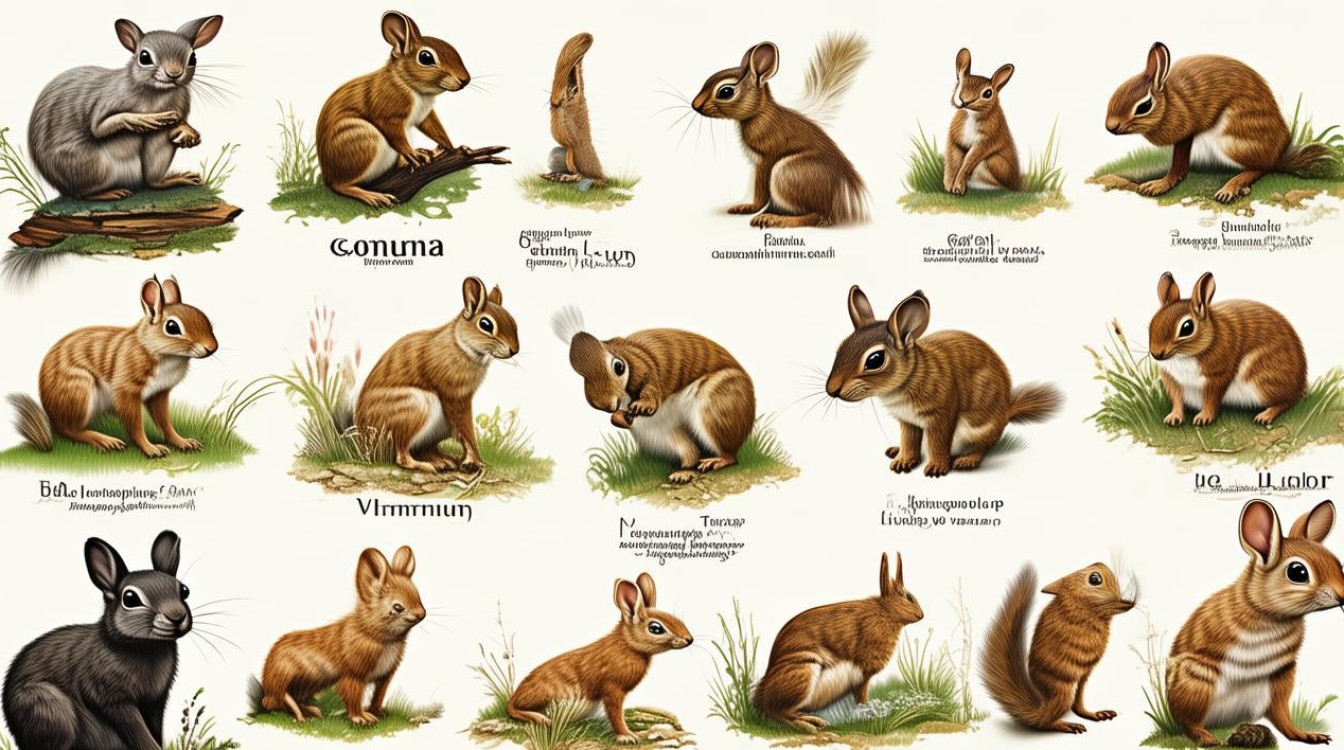Small animals captivate us with their charm and unique characteristics. Whether you're an English learner, a teacher, or simply an animal enthusiast, expanding your vocabulary about these creatures can be both fun and useful. Below is a curated list of English words related to small animals, along with interesting facts to help you remember them better.
Common Small Mammals
- Rabbit – A furry, long-eared mammal known for its hopping movement. Wild rabbits live in burrows, while domesticated ones are popular pets.
- Hamster – Small rodents often kept as pets due to their playful nature. They store food in their cheek pouches.
- Guinea Pig – Social rodents originating from South America. Unlike pigs, they are entirely herbivorous.
- Squirrel – Agile tree-dwelling rodents with bushy tails. They are famous for hoarding nuts.
- Ferret – Slim, playful mammals related to weasels. They are highly curious and require ample space to explore.
- Hedgehog – Small spiny mammals that curl into a ball when threatened. They are nocturnal and insectivorous.
- Chinchilla – Soft-furred rodents native to the Andes Mountains. Their dense fur helps them survive cold climates.
Birds and Feathered Friends
- Parakeet – Small, colorful parrots often kept as pets. They can mimic human speech with training.
- Canary – Bright yellow songbirds known for their melodious chirping. Historically used in coal mines to detect toxic gases.
- Finch – Tiny seed-eating birds with cheerful songs. They come in various colors and patterns.
- Cockatiel – A type of small parrot with a distinctive crest. They are affectionate and enjoy interaction.
- Lovebird – Small parrots that form strong bonds with their mates, often seen cuddling together.
Reptiles and Amphibians
- Turtle – Shelled reptiles that move slowly on land but can be surprisingly quick in water.
- Tortoise – Land-dwelling relatives of turtles, known for their long lifespans.
- Gecko – Small lizards with sticky toe pads that allow them to climb walls and ceilings.
- Frog – Amphibians with smooth skin and strong jumping abilities. They undergo metamorphosis from tadpoles.
- Newt – Semi-aquatic salamanders with bright colors, often indicating toxicity.
Insects and Tiny Crawlers
- Butterfly – Colorful insects with delicate wings, known for their role in pollination.
- Ladybug – Small beetles with spotted wings, considered beneficial for gardens as they eat pests.
- Ant – Social insects that live in colonies and work together to gather food.
- Bee – Vital pollinators that produce honey. Some species live in hives, while others are solitary.
- Grasshopper – Jumping insects that produce chirping sounds by rubbing their legs against their wings.
- Firefly – Bioluminescent beetles that glow at night to attract mates.
Marine and Aquatic Small Creatures
- Seahorse – Unique fish with horse-like heads and prehensile tails. Males carry the eggs until they hatch.
- Clownfish – Bright orange and white fish that live symbiotically with sea anemones.
- Hermit Crab – Crustaceans that use empty shells for protection as they grow.
- Starfish – Marine animals with radial symmetry, capable of regenerating lost arms.
Unusual and Lesser-Known Small Animals
- Sugar Glider – Small marsupials that glide between trees using a membrane between their limbs.
- Axolotl – A type of salamander that retains its larval features throughout life, including external gills.
- Pygmy Goat – Miniature goats kept as pets or for milk production. They are friendly and sociable.
- Fennec Fox – The smallest fox species, recognized by its oversized ears that help dissipate heat.
Why Learning These Words Matters
Understanding animal vocabulary enhances communication, especially for pet owners, travelers, and nature lovers. It also helps in educational settings where children learn about wildlife. Additionally, knowing these terms can improve reading comprehension when encountering animal-related content.

For those studying English, incorporating these words into daily practice—through flashcards, labeling pictures, or describing pets—can make learning more engaging.

Animals play a significant role in ecosystems and human culture. By appreciating their diversity, we develop a deeper connection with nature. Whether observing a rabbit’s playful hops or a gecko’s climbing skills, each creature offers something fascinating to discover.

If you're passionate about animals, consider exploring wildlife documentaries, visiting zoos, or volunteering at animal shelters. The more we learn, the more we appreciate the intricate world of small creatures around us.


